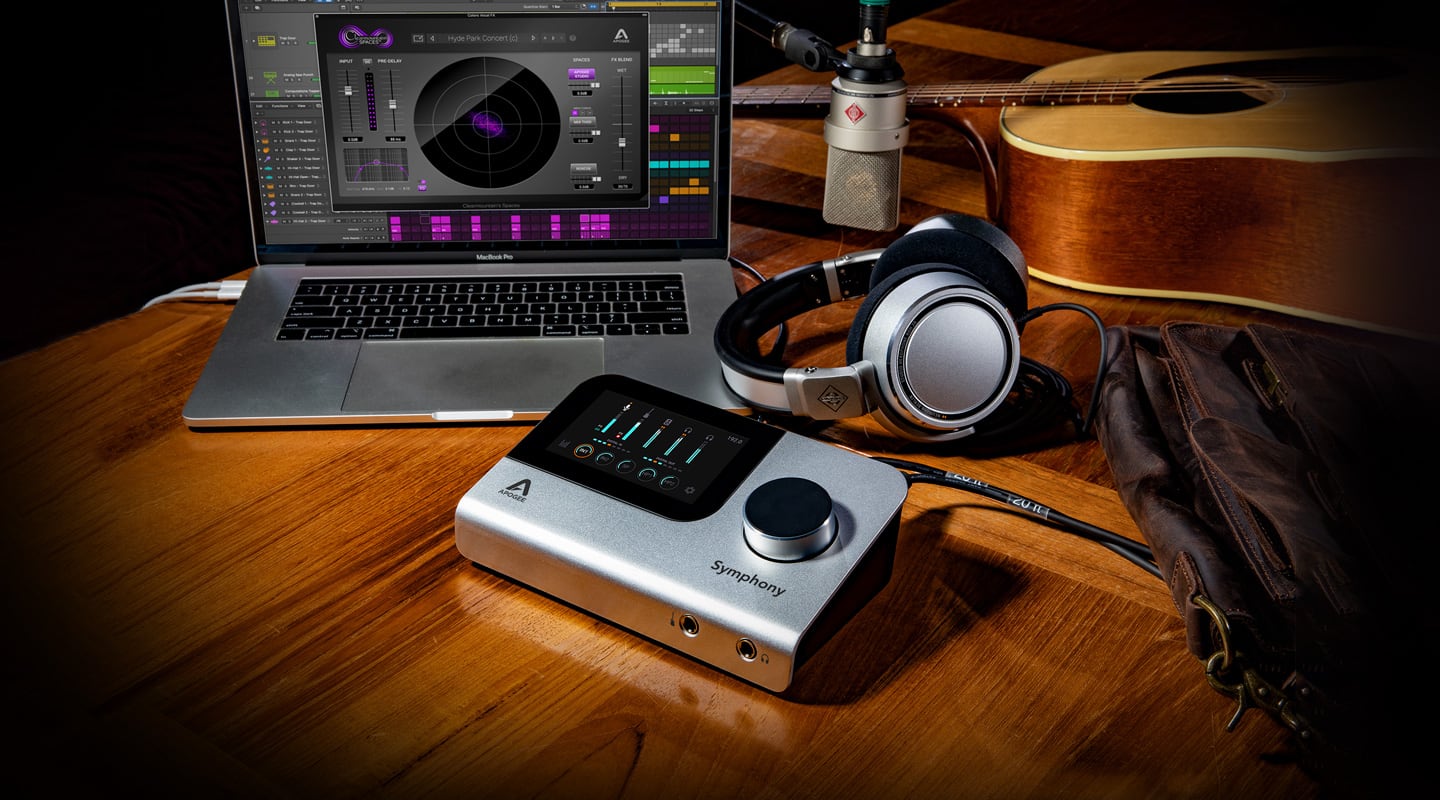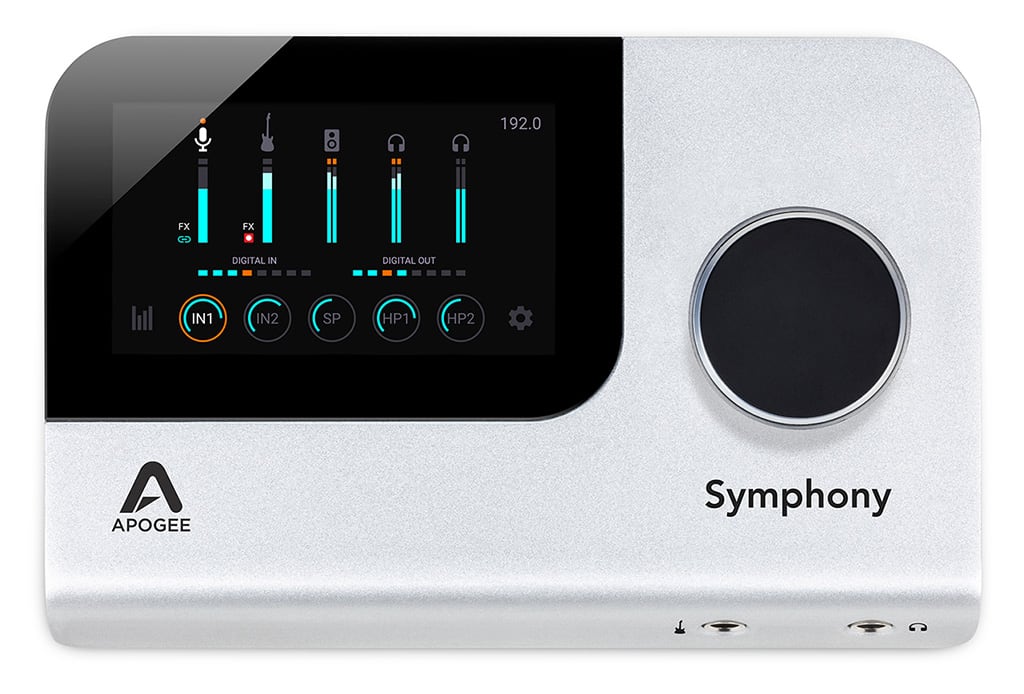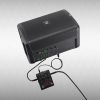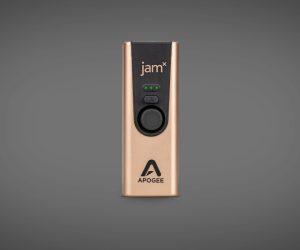
Apogee Symphony Desktop
Apogee’s best conversion is presented in a home studio-friendly unit and dressed up with hardware DSP.
Back in 2016, I reviewed the Apogee Symphony I/O MkII converter. In fact, it was on the cover of our AT137. We made a big deal of it because, well, it was a big deal. Apogee’s Symphony product line is somewhat like what AMG is to Mercedes – it represents the pinnacle of what the company has to offer, specifically in the field of conversion. And when Apogee, as a brand, is already revered for being at the pointy end of the converter market, we paid all the more attention.
The Symphony I/O Mk II is a beast of a machine but with a narrow target market. It weighs in at around A$7k for a 2U chassis packing up to 16 channels of crème de la crème line level conversion. But don’t expect any DSP emulation wizardry, digital inputs, or preamps… only conversion. Suffice it to say, it’s beyond the scope of all but the most well-heeled home studios.
Well, Apogee has launched another member in the same elite Symphony family, and it’s a lot more than a thoroughbred conversion pony like the I/O Mk II.
SYMPHONY CONDUCTS
Symphony Desktop is a 10-in/10-out USB 2.0 interface worthy of the ‘Symphony’ moniker because its A/D and D/A conversion specs are on par with the flagship unit. The little powerhouse provides the same 123dB of dynamic range on the way in and 129dB on the way out, both with ±0.05dB variance across a 10Hz-20kHz spectrum. In other words, you’ll hear stunning depth, width and clarity in everything you record and play through the Symphony Desktop.
Things get more interesting. Apogee hasn’t stopped short at simply hoping primo conversion will make Symphony Desktop sell – the company has added attractive utilities to make it a more versatile recording and production interface. The two analogue inputs boast 75dB of clean gain and Apogee Alloy preamp emulations. The onboard hardware DSP can also power Apogee plug-ins within your DAW. Dual headphone outputs (6.5mm and 3.5mm) are driven by gutsy amps and a DI input sits accessibly on the front of the unit. ADAT ports provide the other eight ins and outs.

POWERING UP
A fulfilling ‘unboxing’ experience isn’t the be-all and end-all but when you’re purchasing a topshelf product it’s becoming an expectation. Every other Apogee device I have reviewed (including the Symphony I/O MkII) has arrived packed in the most pedestrian fashion, which has made for an underwhelming unboxing experience. I am delighted to report Symphony Desktop presents a far superior first impression. The magnetic box flap opens to moulded foam covers in which the unit sits snugly with a ‘Powering Up’ guide laid over the screen. Two USB-C cables plus the power adapter are included, with a selection of plugs for the latter. I love the twist-and-lock mechanism on the DC power plug at the interface end – much neater than the screw collar and equally reassuring.
Setup wasn’t as easy as I hoped. A firmware update is the first order of business and Apogee has a slightly roundabout way of doing it – you need to copy a downloaded folder onto the included USB thumb drive, which then plugs into the Symphony Desktop to run the update. Confusingly, the interface refused to recognise the USB thumb drive. After about five attempts I realised this was because it had been formatted incorrectly. Nothing Disk Utility couldn’t fix in a jiffy but it was inconvenient nonetheless. The only other niggle is when switching on the interface, it emits a very audible hiss through the monitor outputs which disappears after the roughly 30-second power up is complete.
Any setup woes were promptly forgotten when I first pushed some tunes through the Symphony Desktop. Although I have reviewed the exact same conversion with the I/O Mk II, the clarity and purity caught me off guard and I sat there experiencing a mix of delight and surprise as my monitors leapt to life. The old ‘blanket off the speakers’ analogy has been used to death but it’s quite an accurate representation of how it feels hearing music through Symphony Desktop’s output conversion. Realism, depth, width and immersion – it’s all undeniable and utterly enjoyable.
NEED TO KNOW

TOUCHY BUSINESS
What’s almost as impressive as the Symphony’s output conversion is just how much control is possible with the touchscreen. At the time of writing, Apogee has not yet released the Desktop Control software which enables control of the Symphony Desktop’s functions from your computer, so at present all adjustments have to be made on the touchscreen. Thankfully, it’s a breeze and I didn’t once miss using a mouse. You can route I/O from and to virtually anywhere, create a separate tracking mix for a singer, adjust levels for each track, select which preamp emulation to apply on an input, and even tweak the DSP-powered plug-ins.
You’d think doing all of that on a little touchscreen would be laborious but that’s not the case. The GUI is laid out clearly and feels responsive. Tap one of the labelled circles along the bottom to select which input or output you want to modify then swipe left or right to access the various parameters. Apogee has wisely made the physical knob the primary source of control – as opposed to sliding your finger around to adjust on-screen dials or faders – tap a dial on-screen and the orange outline denotes which knob is ‘active’.
HORSEPOWER
Throwing real-time DSP capabilities into an interface is no longer simply fashionable – it’s almost expected. Apogee joins competing brands such as UAD, Antelope Audio, Avid, RME and MOTU by adding natively driven plug-ins to the Symphony Desktop experience. Both analogue inputs can run the Symphony ECS Channel Strip which has been tuned by Bob Clearmountain and sounds the business. Again, it was a cinch to wind up a little high-shelf sizzle and a touch of light compression and saturation all from the touchscreen. Two vintage preamp emulations are accessible on the two analogue preamps too – AP-66 (a Neve 1066 clone) and AP-57 (an Ampex 601 clone). The latter offers an edgy harmonic distortion when driven hard while the Neve is purer and fuller. The ‘vanilla’ Symphony Desktop preamps are fantastic as well; 75dB of clean and quiet gain.
MIXING IT UP
Symphony ECS Channel Strip and Clearmountain’s Spaces plug-ins come as standard with a Symphony Desktop purchase but Apogee sells optional extras such as the FX Rack and Clearmountain’s Domain. These are all powered by the DSP chip inside Symphony Desktop, and they can run natively too.
Mixing my church’s pre-recorded Christmas Eve concert was the perfect opportunity to put Apogee’s plugs to work. Apogee FX Rack is a particularly useful tool with five processors including a Pultec-modelled EQ and compressor, and an LA-3A emulation, all of which have a distinct flavour and can quickly take a track from good to great. Mod EQ-6 and Mod Comp are perfect for more surgical tasks. The Symphony ECS Channel Strip (the same one that can run as a real-time effect on Symphony Desktop’s inputs) is another easy way to pull a track together quickly. It has a neat layout, fewer parameters than FX Rack and a transparent character. I love the Drive knob in ECS to add subtle and musical distortion to a ‘boring’ track. In the reverb department, Clearmountain’s Spaces impressed me immediately with its lush and unobtrusive tails which worked wonders on lead and backing vocals. Finally, Clearmountain’s Domain is a truly stunning reverb which boils down Bob’s signal chain into a few processors: input, delay, pitch/reverb and a mixer. A variety of atmospheres and textures can be created (and recalled via presets) to effortlessly lend your mixes a sense of depth and space.
SIBLING RIVALRY
After a few weeks of use, here’s why I believe the Apogee Symphony Desktop offers incredible value with even broader appeal than the Symphony I/O Mk II.
Let’s say you’ve had enough of ‘prosumer’ interfaces and you’re ready to splash out on a substantial upgrade. Obviously, the dealbreakers would vary depending on our needs, but here’s how Symphony Desktop meets my ‘non-negotiables’.
D/A conversion? Check. In my opinion Symphony Desktop is worth the cash just to sit back and listen to your favourite tunes in all that glorious detail.
A/D conversion? Check. 123dB is not be sneezed at, and the more you track through Symphony Desktop’s analogue inputs the more you’ll realise what you’ve been missing.
Inputs and outputs? Check. 10 of each will suffice for most home recording types, given there’s an eight-channel ADAT preamp to make the most of that digital input.
Hardware DSP? Check. Who doesn’t love the idea of adding a tasteful touch of filtering or Neve saturation on the way in? Symphony Desktop gives it to you, then as a side benefit, it’ll power plugs within your DAW too.
What Symphony Desktop can’t be, is the ultimate bridge between your boutique collection of preamps and the digital world of 1s and 0s. Multiple channels of line level conversion is the I/O MkII’s territory.
But all things considered, for less than A$2.5k, the Apogee Symphony Desktop is the closest I’ve come to experiencing the ultimate home studio interface.
























RESPONSES